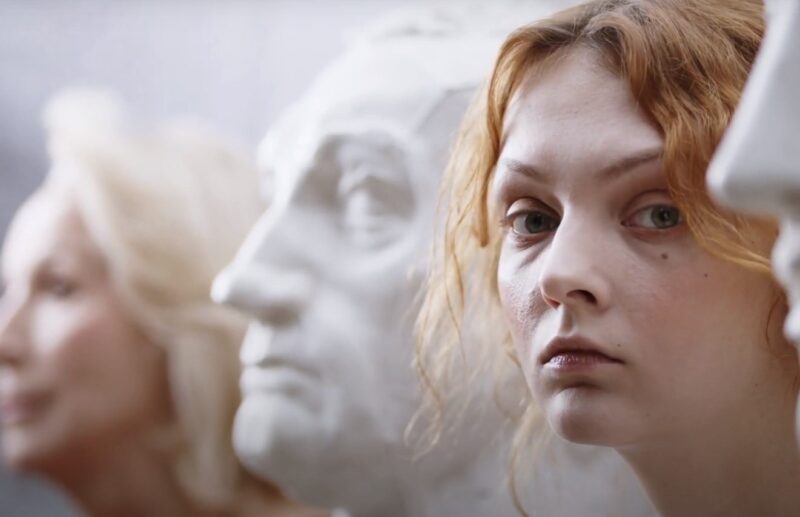The concept of physical reality being a dream has been a subject of both philosophical and scientific debate for centuries. Philosophers have contemplated the nature of reality and questioned if our perceptions could be the result of a dream-like state.
On the other hand, advancements in science have led to new perspectives, exploring the implications of quantum mechanics and the psychology of dreams in understanding the nature of our reality.
Key Takeaways
Philosophical Foundations

Solipsism and Reality
Solipsism is a philosophical idea asserting that the only thing an individual can be sure of is his or her own existence; everything outside one’s mind could be a figment of imagination. This theory challenges our perception of reality, propelling us to question the legitimacy of the external world. While this concept has been widely debated, it has not gained much traction in contemporary philosophy, as there are numerous arguments against its feasibility.
Plato’s Allegory of the Cave
Plato’s Allegory of the Cave suggests that our perception of reality could be distorted. In this allegory, individuals are chained inside a cave, facing a wall, with a fire behind them. Shadows are the only form of reality they’re exposed to, and they mistakenly believe these shadows represent the true nature of the world. When one prisoner is freed and beholds the world outside the cave, they realize the shadows did not equate to the absolute reality. This allegory hints at the possibility that our physical reality might be a mere reflection or illusion, similar to the shadows perceived by the cave dwellers.
Descartes’ Dream Argument
René Descartes, a pivotal figure in the founding of modern philosophy, presented a dream argument as part of his epistemology. He asserted that the experiences in our dreams could be indistinguishable from waking life, thus questioning the certainty of the external world. Descartes famously declared, “Cogito, ergo sum” – “I think, therefore I am.” This stance emphasizes that while it is conceivable for the physical world to be an illusion or a dream, the existence of one’s thinking mind remains uncontested, as it is the source of all doubts and thoughts.
Scientific Perspectives

Quantum Mechanics and Perception
In recent years, the world of science has explored the possibility that our physical reality might be more dream-like than we initially thought. One of the primary focuses of this research is in the area of quantum mechanics. Quantum mechanics is a fundamental aspect of physics that deals with the behavior of matter and energy at small scales.
Central to this discussion is the idea of observer effect, which suggests that the act of observing a quantum system can influence its behavior. In essence, the presence of an observer alters the probabilities of different outcomes. This raises questions about the connection between perception and reality, and it has led some researchers to propose that our conscious experience may be fundamentally intertwined with the quantum world.
Also, looking into dreams that predict the future, and exploration of precognitive phenomena, is pretty intriguing. It gives us a sneak peek into how time and consciousness might be linked to quantum mechanics stuff.
Furthermore, the concept of entanglement in quantum mechanics implies that particles can be connected in such a way that the state of one particle can instantly affect the state of another, even if they are far apart. This non-local correlation has led some scientists to explore the possibility that consciousness might be a more integral part of the fabric of the universe, as suggested by panpsychism.
Simulation Hypothesis
Another scientific perspective comes from the simulation hypothesis, which proposes that our reality is actually a computer-generated simulation. This idea has gained traction in recent years, with some technological advancements and philosophical arguments supporting the notion that our universe might be artificial.
Proponents of the simulation hypothesis argue that if advanced civilizations can create highly sophisticated virtual environments that are indistinguishable from the real world, it is statistically more likely that we are living in a simulated universe instead of the base reality. This idea has generated considerable debate among philosophers and scientists alike.
In conclusion, both quantum mechanics and the simulation hypothesis offer unique perspectives on the notion that our physical reality might be more akin to a dream. While neither theory has been definitively proven, each provides a fascinating glimpse into the potential nature of reality, pushing the boundaries of our understanding and challenging our preconceived notions.
Psychology of Dreams

Consciousness and Dream States
The concept of dreaming has fascinated scientists and philosophers for centuries. Dreams occur during sleep, specifically in the Rapid Eye Movement (REM) stage. Some theories propose that dreams are a manifestation of our unconscious desires, thoughts, and motivations. One interesting phenomenon associated with dreaming is lucid dreaming, where individuals become aware that they are dreaming and have some level of control over their dreams.
Lucid dreamers might hold insights into the deeper workings of the mind, as they can navigate their sleeping minds and, to an extent, manipulate their dream environment. Researchers are studying lucid dreaming to understand the relationship between consciousness and dream states. The capacity to maintain conscious awareness during sleep challenges the traditional notion of what defines wakefulness and dreaming. This raises questions about the possibility of physical reality being a dream-like state.
Interpretations of Dreams
Dreams have been subject to various interpretations across cultures and time periods. Sigmund Freud, one of the pioneers of psychoanalysis, believed that dreams represent unconscious desires and repressed thoughts, and serve as a way for the mind to process and resolve these inner conflicts. Carl Jung, another influential psychologist, postulated that dreams function as a means of psychological integration and personal growth.
Modern theories have taken a more neurobiological approach to understanding dreams. According to these theories, dreaming is the brain’s way of processing information and consolidating memories. While the content of the dreams might not offer direct insight into the dreamer’s mental state, the process of dreaming itself helps to maintain cognitive function and mental health.
As the study of dreaming continues to evolve, the possibility that physical reality is merely a dream remains an intriguing question. In the meantime, the relationship between dreams, consciousness, and our perception of reality will continue to captivate researchers and philosophers alike.
Comparative Mythology
Dream Motifs in World Cultures
Dreams have been a source of inspiration, contemplation, and fascination across various cultures throughout history. The role of dreams in mythologies often uncovers deep insights into how diverse societies thought about and interacted with this enigmatic aspect of human experience.
In the study of Comparative mythology, it has been observed that dreams play a significant role as recurring motifs and themes. For instance, among different world mythologies, dreams are often seen as:
- A channel for communication with the divine or spiritual realm
- Portents of future events or warning messages
- Bridges between the conscious and unconscious mind
- Tools for psychological exploration and self-discovery
The analysis of these recurring dream themes can provide a better understanding of the shared human experience across different cultures.
Dreamtime in Indigenous Australian Beliefs
One particularly fascinating example of dreams in mythology is the concept of “Dreamtime” in Indigenous Australian beliefs. Dreamtime, or “Tjukurrpa” in the indigenous languages, is a complex and multi-layered concept that transcends reality and lies at the core of Indigenous Australians’ understanding of the world.
Dreamtime stories serve various purposes, such as:
- Describing the creation of land, animals, and people
- Outlining the laws, morals, and social customs
- Explaining natural phenomena and seasonal changes
While it’s hard to fully grasp the intricacy of Dreamtime within the scope of this article, it’s noteworthy how the concept intertwines the spiritual, physical, and dream realities. The indigenous people believe that their ancestors’ spirits from the Dreamtime exist in the present and that dreams can be a connection to this spiritual dimension.
In conclusion, comparative mythology shows that dreams have been a significant element in many world mythologies, revealing several shared themes across cultures. Dreamtime in Indigenous Australian beliefs illustrates a unique instance of how the line between dreams and reality can blur, raising intriguing questions about the nature of physical reality and its possible dream-like aspects.
Literary and Media Influences

Dreams in Fiction and Film
Dreams have long been a popular topic in fiction and film. Throughout the history of storytelling, dreams have served as a means to explore alternate realities, inner thoughts, and the mysterious realm of the unconscious. Examples of dreams playing a significant role in fiction include Alice’s Adventures in Wonderland by Lewis Carroll, and The Trial by Franz Kafka. In these works, dreams and altered states of consciousness blur the lines between reality and illusory experiences.
In film, dreams have been used in varied ways, from visual storytelling devices to central themes. One example is the critically acclaimed movie Inception directed by Christopher Nolan, which explores the concept of dream manipulation and shared dreams. The film’s premise raises questions about the nature of reality itself and whether our understanding of the physical world could in fact be an elaborate dream.
Metaphors and Narratives
Dreams as metaphors and narrative devices are common, both in literature and other forms of media. Using dreams as a metaphor can help convey complex ideas, emotions, or situations that might otherwise be difficult to express. For example, dreams are often used to symbolize emotional turmoil or psychological distress, as seen in A Midsummer Night’s Dream by William Shakespeare, where characters’ romantic entanglements create chaos and confusion.
In some cases, dreams or dream-like sequences can serve as allegories for societal issues, such as class struggle and power dynamics. This can be seen in George Orwell’s Animal Farm where the dream of a utopian society turns into a dystopian reality.
Utilizing dreams and dream-like scenarios in fiction and media allows storytellers to delve into and explore the human psyche, often revealing deep-rooted fears, desires, and insights, all while questioning the distinction between physical reality and our perceptions. The impact of these influences can be seen in how people view the concept of reality, and even spark discussions about whether we might be living in a dream-like state.
Frequently Asked Questions
What philosophical arguments support the idea that life could be akin to a dream?
Some philosophers argue that our experiences in the waking world and dreams have similarities, which leads to the question of whether life could be a dream. One of the foundational arguments comes from René Descartes, who famously said, “Cogito, ergo sum” (I think, therefore I am). He believed that since an individual cannot prove their experiences in a dream differ from those in waking life, this possibility should be considered.
Can dreams be so vivid that they are indistinguishable from reality?
Yes, dreams can be extremely vivid and realistic, which is backed by scientific studies. Individuals frequently report having experiences in dreams that feel real, with even the fine details being clear. In some cases, it is not until waking that the dreamer realizes their experience was not part of their waking life.
What evidence exists against the notion that our physical reality is merely a dream?
Various scientific perspectives argue that our experiences in the waking world correspond to a shared, measurable, and consistent reality. This contrasts with dreams, which are typically subjective and highly variable. Additionally, the physical world operates under certain immutable laws, like those of physics and chemistry, that provide a constant framework for our experiences and distinguish them from the fluidity of dreams.
How do theories in metaphysics approach the concept of dreams versus reality?
Metaphysics tries to understand the nature of reality and often explores the idea of dreams versus reality. Dualism, for example, posits that there are two aspects of reality, one being the physical world and the other a non-physical mind or consciousness.
This perspective can lead to further discussions about the distinction between dreams and reality. Other theories, like idealism, suggest that reality is fundamentally mental or experiential, further blurring the lines between dreams and the waking world.
In what ways does dying and waking from a dream metaphorically relate to our understanding of life and afterlife?
Dying in a dream and then waking up can be considered a metaphor for the concept of life transitions and afterlife. In many spiritual and religious traditions, the afterlife is seen as a new beginning or an awakening. When one “dies” in a dream and then “wakes up” in their physical reality, it may symbolize the idea that there is something beyond the experience of death.
How have historical philosophies addressed the question of life being a dreamlike experience?
Throughout history, philosophers and thinkers have contemplated the nature of reality and its relationship with dreams. One prominent example is Zhuangzi, a Chinese philosopher who famously described a dream in which he became a butterfly. Upon waking, he questioned whether he was a man dreaming he was a butterfly or a butterfly dreaming he was a man. This anecdote illustrates the ongoing philosophical debate about the nature of dreams and reality across various cultures and time periods.
Conclusion
The contemplation of physical reality as akin to a dream weaves together philosophical inquiry, scientific discovery, and cultural expression into a rich tapestry of human thought. From the ancient musings of Plato and Descartes to the cutting-edge theories of quantum mechanics and the simulation hypothesis, humanity’s quest to understand the nature of reality remains an ever-evolving journey.
